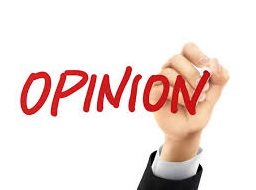
On November 10, the Kansas School Board voted 7-1 with two abstentions to pass a resolution. They recommend that schools drop their Native American (“Indian”) themed mascots. This came upon the recommendation of a commission, including representatives from four federally-recognized tribes with significant numbers here in Kansas. The resolution is not tied to funding or accreditation. Even so, several school districts including Atchison, Wichita, and Shawnee Mission had already stopped using such mascots, and more name changes are under consideration.
Our region’s highest-profile team with such a name is of course the Kansas City Chiefs. Though they play in Missouri, the Chiefs Kingdom (as they call it) extends well into Kansas. The team name, stadium name, and arrowhead logo all reference Native Americans, and so do fan rituals such as the “war cry” and the “tomahawk chop.” With other sports teams having dumped such names, protests by local Native American groups to change the name are growing. A deep dive shows just how complicated such decisions can be.

The Chiefs are named for former Kansas City, MO Mayor H. Roe Bartle, who was instrumental in moving the former Dallas Texans football team to KC. Bartle earned his nickname “The Chief” by founding a Boy Scout Camp near Osceola, MO, which is now named for him. He also founded a regional Scouting organization with the now politically-incorrect name, Tribe of Mic-O-Say, which has tens of thousands of fiercely loyal members and supporters, mostly in Missouri and Kansas. Many alumni and adult leaders have given generously of their time and money over the years to support the organization.
Scouting legend holds that Bartle founded Camp Osceola after studying with Native American tribes in Montana. Impressed with their rituals in which boys become men, and long before a time when gender neutrality was an expected norm, Bartle created an imaginary “tribe” for Boy Scouts where they could practice similar initiation rites. To this day, boys (and now girls) recreate these rituals as part of their rites of joining the organization.
Mic-O-Say is just one example of Scouting-connected “Indian” lore that is increasingly considered offensive today. Scouting itself is also in big trouble. Formerly called Boy Scouts of America, they are now in bankruptcy. Some Mic-O-Say youth and parents are weighing in with proposals for new themes. My favorite is Star Wars, but this of course would require an arrangement with the Disney Corporation. My entire immediate family are Mic-O-Say members, and I do hope that they find a way to preserve the organization and Scouting itself, with its commitment to team building and survival skills. This will require dialogue, respect and sensitivity toward Native American communities.
As for the Chiefs, I am tempted to suggest that they keep their name but drop the “war cry” and “tomahawk chop.” Alas, fans may find this confusing. Instead, a complete name change may be inevitable, but there are further complications. For example, what about the popular “arrowhead” tattoo many fans have on their bodies? The team would also have to spend a great deal of money removing old signage and other branding, and irate and forgetful fans alike are likely to continue using the old names, rituals and symbols for years. After all, I still meet people who refer to Emporia State as “Kansas State Teachers College” — a name we dropped in the early 1970s. Finally, the whole thing could easily get sucked into our society’s wider culture war.
Changing offensive names and showing respect for all cultures is vital work – but it sure does come with complications.
Michael Smith is a professor at Emporia State University.






